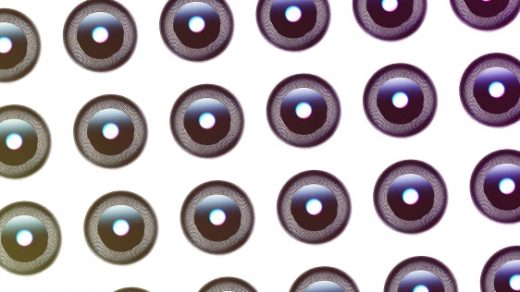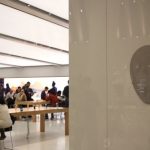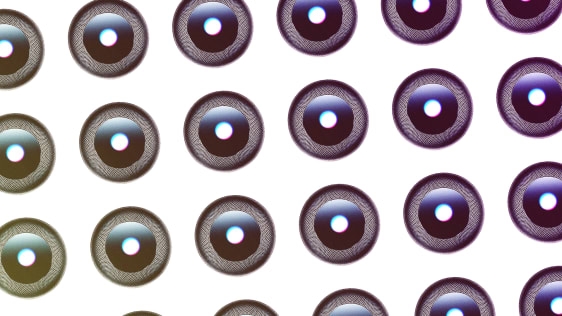Apple’s Biggest Claim About HomePod Is Legit, According To Our Acoustics Tests
This is Part Two of a three-part series of reviews of Apple’s HomePod. We published a subjective analysis of the device on Friday. A story tomorrow will test Apple’s claim that the HomePod is unbiased and true to the production values of music.
One of the claims Apple makes about its new HomePod smart speaker is that music played through it sounds pretty much the same, no matter where in the room you happen to be standing or sitting. Apple also says that the HomePod will create pretty much the same sound in the room regardless of where it is placed.
We’ve heard plenty of opinions on the HomePod’s general sound quality, so it’s a good time to measure the consistency of the HomePod’s sound distribution using some professional-grade acoustic analysis tools.
For that we turned to NTi Audio AG, the Liechtenstein-based company that makes all kinds of acoustics testing gear and software. The company was kind enough to loan us a testing device, software, and a special microphone so that we could test the HomePod in a real-life natural habitat–my living room. The company’s Brian MacMillan coached me on how to do the tests, then he and some other NTi people analyzed (and helped me understand) the results after the numbers were uploaded to a cloud server.
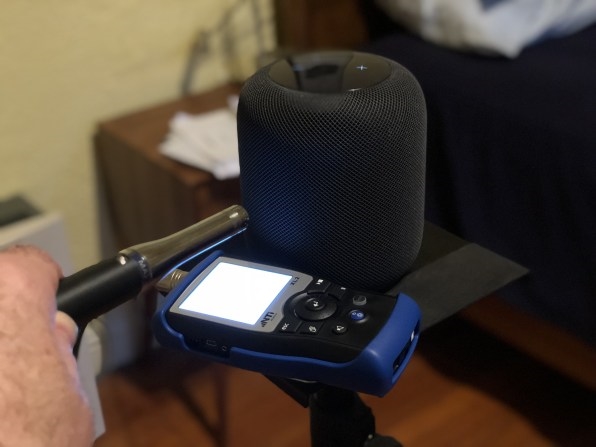
Consistency Of Overall Sound
In order to test the consistency of the HomePod’s audio throughout the room, we placed the HomePod on a 30-inch high table by a wall and set it playing a white noise test sound that produces an equal amount of decibels throughout the frequency spectrum.
We recorded this from four locations in the room: 22 inches off the floor and 81 inches off the floor from the middle of the room (13 feet from the HomePod), and 25 inches and 81 inches off the floor 7 feet away on the same wall next to the same wall the HomePod sat near.
After measuring the full frequency spectrum (40Hz through 20,000Hz) of the HomePod’s sound output from each location, we compared each sound profile to see how much they changed from location to location in the room.
The HomePod’s profile changed very little. The average variance for all audible frequency bands was less than a decibel–0.95 decibel. My NTi friends said humans can’t really detect changes in sound below a decibel.
We saw considerably more output variation in the Harman Kardon Invoke. The average variance across all audible frequency bands was 3.4 decibels.
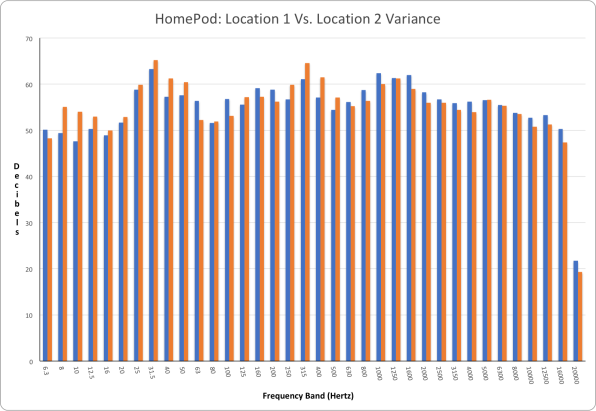
In short, Apple’s claim that the HomePod can deliver a consistent representation of a piece of music throughout the room looks truthy.
“The developers have done an excellent job of having the HomePod adjust to the room; (it has) Impressive consistency in overall level and frequency response,” said NTi’s MacMillan.
“The HomePod automates spatial compensation that previously required a real audiophile’s expertise, tools and time,” he said.
The How (And, Maybe, The Why)
How does the HomePod pull off such magic? Through some very sophisticated audio processing algorithms. As it plays music in a room, the HomePod records the behavior of the sound waves emitted using an array of six microphones situated along the inside wall of the device. This information is fed into the algorithms, which then adjust the output of the speakers to deliver a tailor-fit and consistent sound throughout the room.
Another microphone deeper inside the HomePod listens for the presence of walls and other large objects in the room that might interfere with output–like the long sound waves that comprise deep bass. If the HomePod’s microphone detects that it’s sitting next to a wall, an algorithm adjusts the way the driver is outputting low-end sound.
It’s true that the speakers and other components inside the HomePod are of very high quality. But it’s those algorithms–the intelligence of the speaker itself–that back up the claim that the HomePod is the best-sounding smart speaker on the market. Apple’s definition of “smart” speaker might simply be different than the common understanding–a speaker with a digital assistant inside. The “smart” in Apple’s definition might refer to “sound smart,” not “Siri smart.”
Fast Company , Read Full Story
(47)

